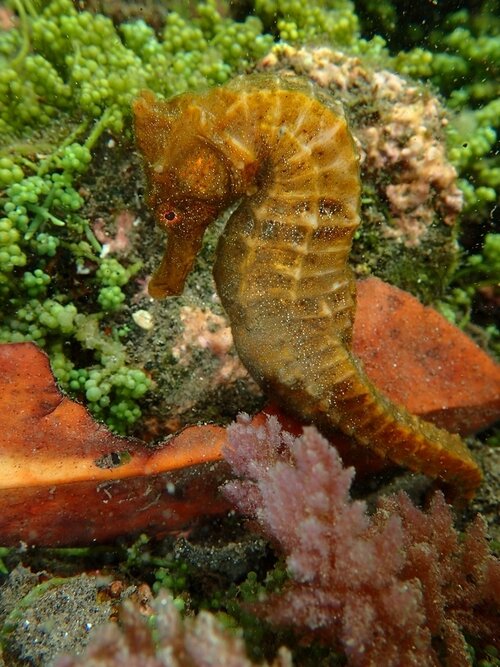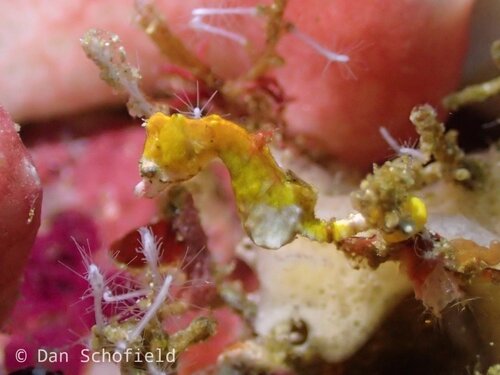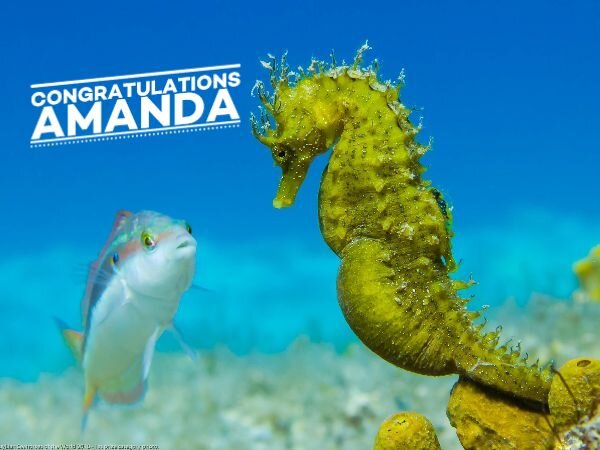Gentle (underwater) "giant" of Galapagos - the Pacific seahorse
by Rebecca Waines

Pacific seahorse (Hippocampus ingens). Photo by Rémi Bigonneau
This month’s featured gem of citizen science goes to Rémi Bigonneau (remi_bigonneau on iNaturalist) for this dazzling shot of the Pacific seahorse (Hippocampus ingens) off the coast of the Galapagos Islands.
Extraordinarily large for a seahorse, Pacific seahorses - also known as Giant seahorses - can grow to 31 cm long and are rivaled only by the big bellied seahorse (Hippocampus abdominalis) which can grow to 34 cm long.
Pacific seahorse populations are typically confined to the coast that runs from California to Peru, which is why this wily island-dwelling population in the Galapagos waters is so special. The Galapagos Islands have been admired around the world ever since a strapping young Darwin stepped foot on them over 150 years ago. At the time, it was the giant tortoises, marine iguanas, and intimately related bird species which left Darwin amazed. Little did he know the treasures that might have awaited him… if only he had gone for a scuba dive.
I’m sure Darwin would have been fascinated to see this species, which, for a fish, is a little bizarre:- its males give birth to live young, its tails coils instead of swishes, and it has a fused jaw, among many other interesting traits.
Unfortunately, these gentle “giants” continue to be caught for use in cultural medicine, the aquarium trade, and the souvenir industry, and are presently listed as Vulnerable on the IUCN Red List of Threatened Species.
If you wish to learn more about the conservation status and efforts of the Pacific seahorse check out the links below:
https://onlinelibrary.wiley.com/doi/abs/10.1111/j.0022-1112.2004.00429.x





 Usá ArgentiNat con app iNaturalist
Usá ArgentiNat con app iNaturalist





